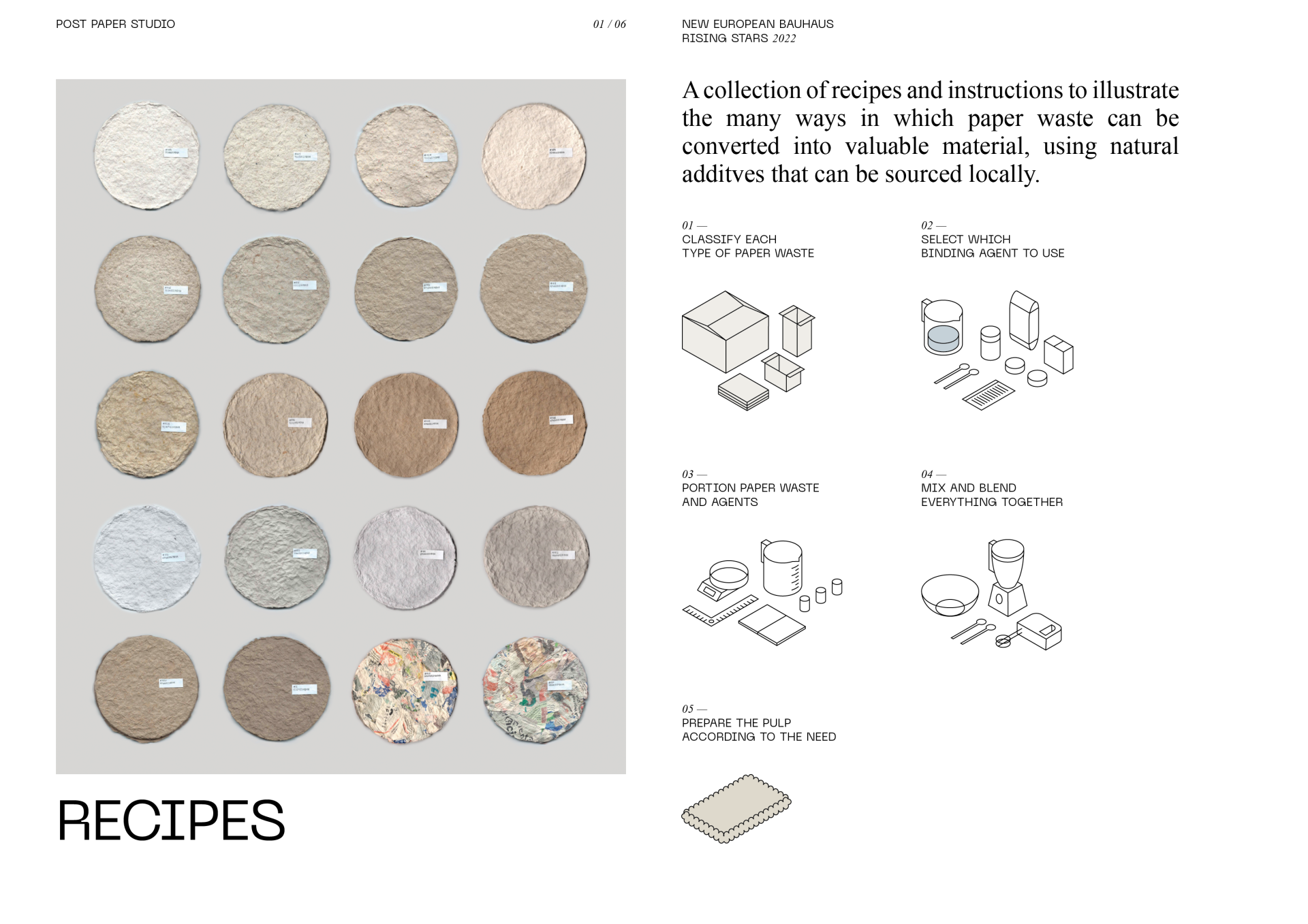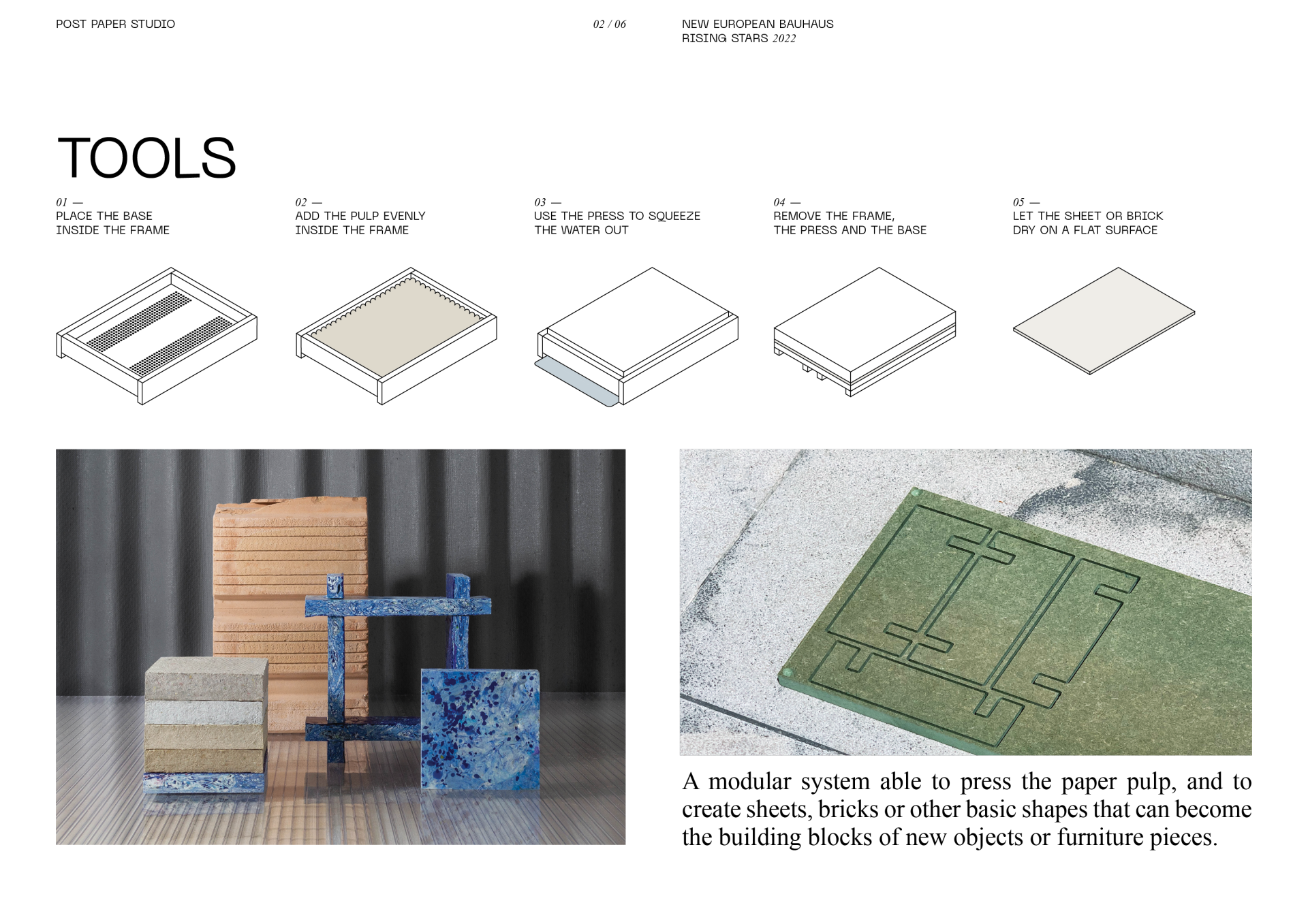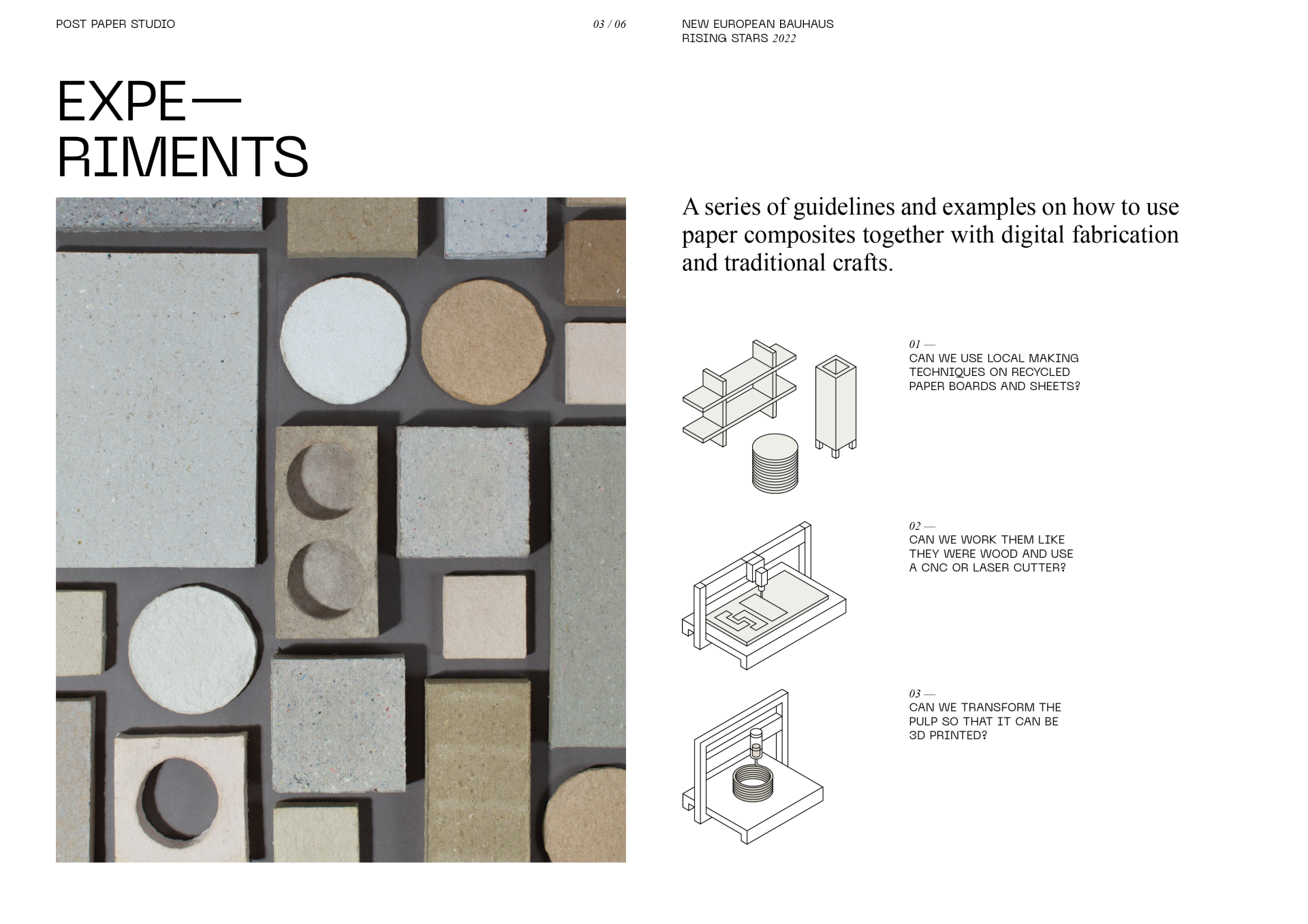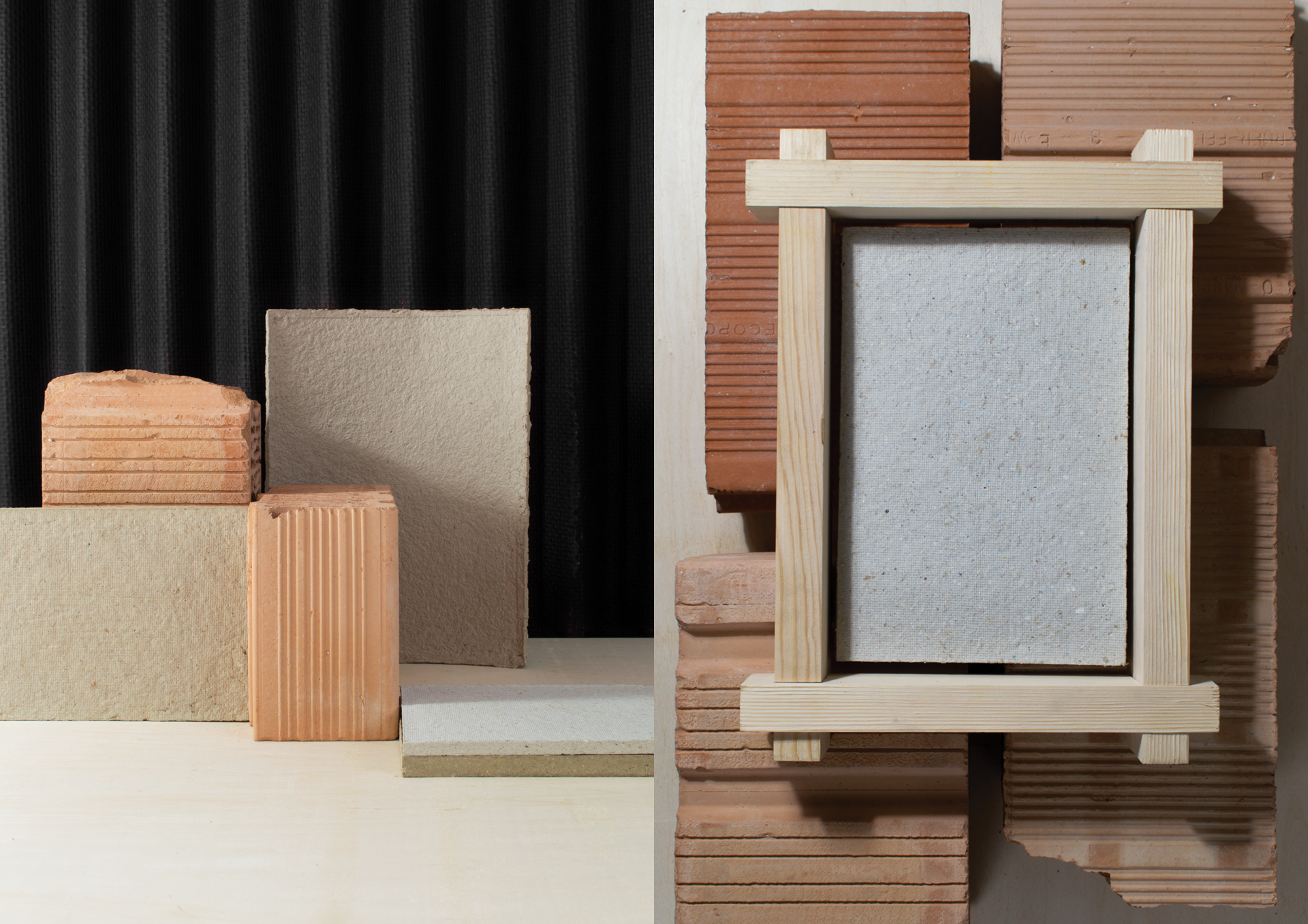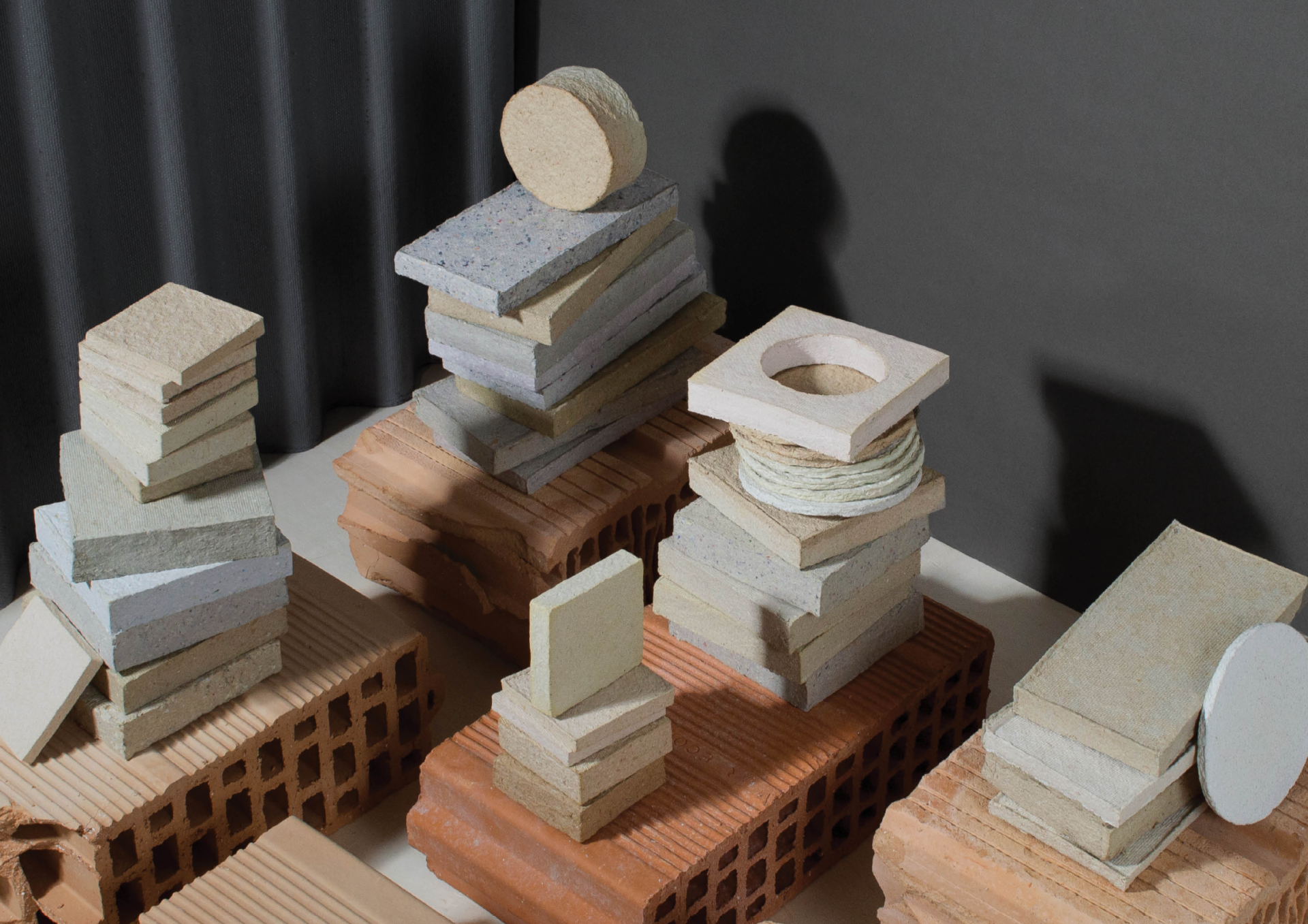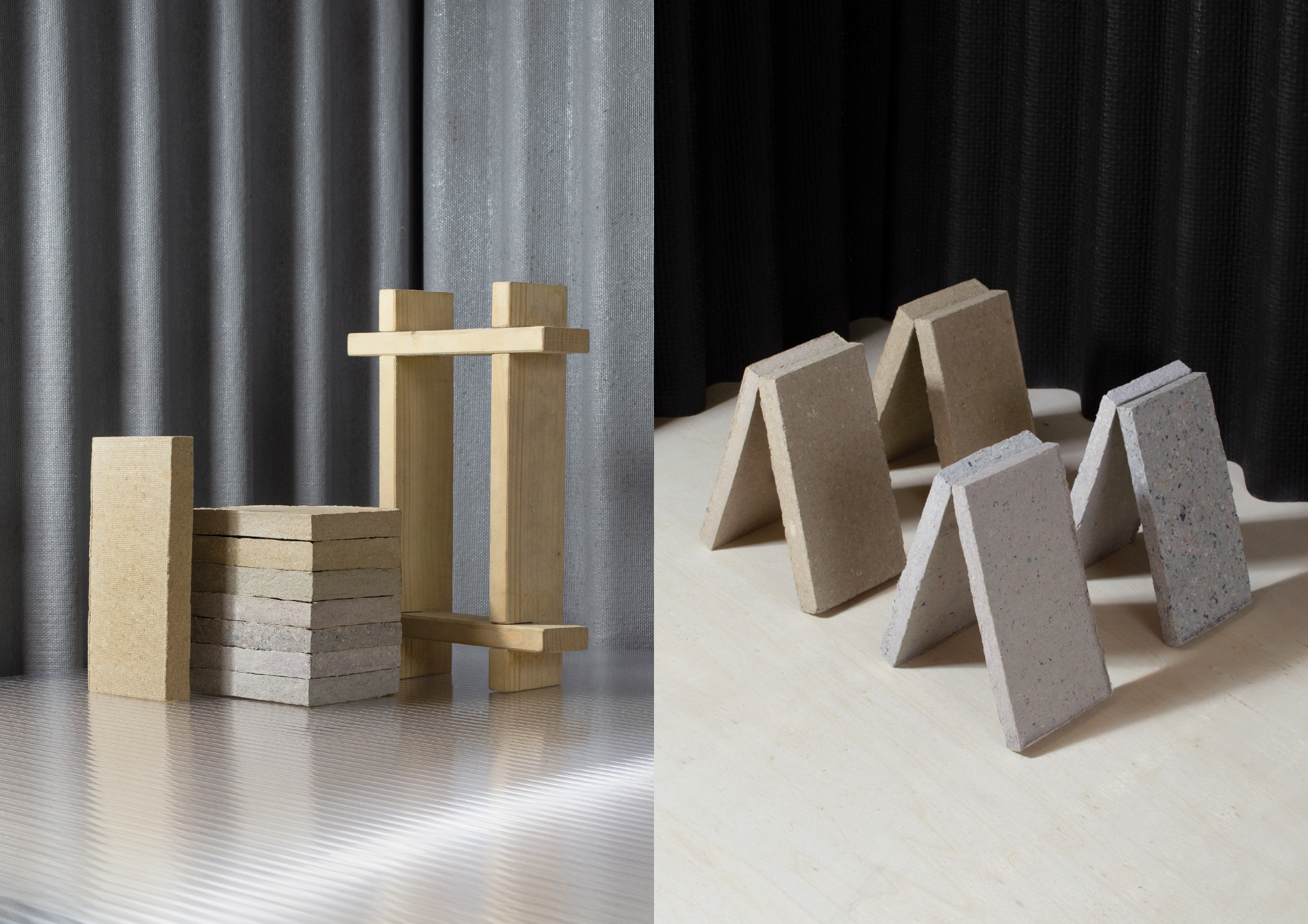Post Paper Studio
Basic information
Project Title
Category
Project Description
Post Paper Studio is a series of open source recipes, tools and experiments to enable anyone anywhere to transform paper waste into valuable design and construction material. The goal is to design an alternative method to upcycle paper at a local scale, turning the recycling practice from centralised and exclusive to distributed and accessible, while promoting its worth and potential when combined with the knowledge and equipment of local makerspaces and artisanal workshops.
Geographical Scope
Project Region
Urban or rural issues
Physical or other transformations
EU Programme or fund
Which funds
Description of the project
Summary
If we define as ‘local material’ any resource available in large quantities in a certain area, shouldn't we start considering waste as one? What if we took advantage of it exactly where it is discarded? Would we still be so detached from the intricate—almost illogical—recycling system?
Post Paper Studio aims at developing an open system to upcycle paper waste locally, inside the city, without having to rely on large centralised recycling plants, while researching paper’s versatility and function at the intersection of biomaterial design, digital fabrication and traditional crafts. It consists of a series of open source and low-tech recipes, tools and experiments that can be used by designers, makers, artisans and businesses to transform paper waste into durable, fair and captivating objects.
Through a collection of recipes and instructions, we mean to illustrate the many ways in which paper waste can be transformed into pulp and combined with natural binders to improve its material properties and create paper composites that can be used in any desirable setting. The recipes use different types of paper and cardboard, commonly found in any household or office, highlighting their different properties, values and downsides.
The tools are meant to transform the pulp resulting from the recipes according to its final use. We designed a modular and upgradable system able to press the paper pulp, and create sheets, bricks, boards or other basic shapes that can become the building blocks of new objects or furniture pieces.
Through the experiments we explore how to use the resulting paper composites together with digital fabrication tools—CNC milling, laser cutting or 3D printing—and local making techniques—woodworking, engraving or weaving—in a series of tests and trials, in collaboration with local makerspaces and craftsmen. Trying out some of these unusual combinations is a way to display the project’s potential and inspire others to adopt and contribute to this work.
Key objectives for sustainability
Post Paper Studio appears, foremost, as an answer to the paradox of recycling in its current moulds: a much needed endeavour to repurpose resources, but nonetheless a carbon intensive process that collects waste and moves it across cities, countries and continents to be sorted, recycled, transformed and finally shipped back to cities.
We want to change the paradigm by making paper recycling more tangible and accessible to local communities, avoiding the shipment of waste around the planet. The idea of developing a semi-industrial method for upcycling paper locally allows neighbourhoods to recycle their own paper waste—limiting carbon emissions from transportation, making sure we know what happens to our waste, and keeping the city’s material resources productive for as long as possible.
Another important goal is to challenge the current limitations of the recycling industry, while showing the importance of designing systems that take into account what happens to materials and products when they are no longer needed—can they be repurposed through the existing infrastructure or do they pose a challenge?
By having an experimental approach, we are able to recycle paper that is currently discarded by the mainstream recycling system—such as wet paper, greasy cardboard or receipts—and we make sure that each recipe we develop uses only natural and organic binding agents—like starches, alginate, resins or gums—that can be sourced locally, according to what is most available to the community, so that the resulting paper composites can be easily incorporated back into recycling or composted.
While the recipes and tools are meant to make the material long-lasting and ambitious to work with, the experiments want to dispute the conventional materials used inside makerspaces and artisanal workshops. This challenges the idea of paper as cheap discardable material, inviting the community to use repurposed materials, while having an active role in upcycling the city’s own waste.
Key objectives for aesthetics and quality
We see the visual experience of Post Paper Studio as a key element to really have an impact in attracting the community to replicate our project. From a communication standpoint, we want the visual identity to be capable of expressing the values we share and be strong enough to unfold the possibilities of the project. However, these ideas are also translated into the core design language of the project itself, with tools that are minimalist but efficient, and paper composites that go beyond recyclability to hold particular textures, finishes and shapes.
Paper, especially recycled one, is seen as an easily discardable material without great value. We are so used to seeing this material in ephemeral applications, that it becomes hard for us to imagine it in any other way—maybe because it is resistant enough for temporary protection and transportation, but not strong and appealing enough for more premium and enduring solutions.
Aesthetics play a fundamental part in changing people’s mentality and perception towards paper. By selecting different types of cardboard and paper waste and experimenting with various natural additives, we are able to change the character and features of the resulting material—from colour and feel, to flexibility and resistance. This not only confers paper composites the versatility to be adapted according to necessity, but also enables them to be used in new and more enticing ways.
Transforming paper waste into material composites that, besides looking good, have properties that allow them to either be crafted like wood or worked together with digital fabrication techniques, capacitates designers, makers, artisans and businesses to transform paper waste into a valuable raw material for their products and creations. The resulting paper composites can be used alone or in conjunction with other materials and resources to create virtually anything—from furniture, to everyday essentials, such as cases or boxes, or even wall panels.
Key objectives for inclusion
A big part of what moves Post Paper Studio is the sense of community and locality. Bringing paper recycling inside the city, closer to where products are used and discarded, is a way to move the paper recycling from centralised and exclusive to distributed and accessible, enabling local communities to be more resilient and self-sufficient.
The inclusion of the community in the project happens on various levels. Firstly, with the development of the project itself, for which we collaborate with local fab labs, makerspaces and artisans to help us design, develop and manufacture the tools to mould the paper, and experimenting different working techniques on the resulting paper composites—either from crafts knowledge or available digital fabrication technology.
Secondly, by making sure the recipes can be recreated with inexpensive locally abundant ingredients and regular kitchen tools, without the need for complex and delicate laboratory equipment—challenging the idea that biomaterial development can only happen within scientific research. Moreover, the tools too can be customised and made with readily available materials—such as wood, recycled plastic or metal—with the help of local makerspaces and craftsmen.
Finally, by openly sharing the project with the community, making sure each development—from the recipes and tools, to the experiments—is made open source. The open data collection is a starting point for anyone who wishes to experiment with local waste to create new designs. We hope to inspire others to see paper waste as a valid alternative to virgin materials, and to contribute to the development of other processes enabling recycling at a local scale. Ultimately, the more people are able to upcycle materials already present around them, the better.
The open source nature of the project allows anyone to replicate, adapt, improve and contribute to the project according to their needs, to their geographical area and to the local community they work with.
Physical or other transformations
Innovative character
The combination of these three aspects are all fundamental in order to create a system that can be truly open, inclusive, circular, distributed and engaging.
While we have said already that open source and low-tech is what allows anyone to replicate this project, it is also what makes the change to distributed and local production faster. Inviting the community to take on this challenge and start upcycling paper inside their neighbourhoods, means that cities can shift towards becoming resource aware and locally-productive—at the hands of their own people. At the same time, it proves that, with the right infrastructure and knowledge, we can foster a framework where the community—more than just repurposing its own waste—is empowered to manufacture on-demand, locally and according to necessity, without having to rely on outside systems and assuming a clear and tangible perception of their actions’ outcomes.
But sustainability and inclusion do not come only from upcycling paper and making it more accessible, but also from the conceptualization of the whole system itself. The recipes and tools were developed and tested using ingredients and materials that are commonly found in stores and supermarkets, so that they can be recreated according to what is most available locally. Moreover, the tools are easy to assemble and disassemble, without using glue or screws, and the different components derive from just one sheet of material, having as little byproduct as possible. One just needs to download the blueprints and approach the closest makerspace or crafts atelier to have their prototypes manufactured. This way, the project can be adapted according to needs and available resources, making it deeply contextual to the place and community.
This is also why it was so important that, during development, both the recipes and the tools were able to produce results that have the grade and quality to be used in unique, more inviting and enduring applications.

